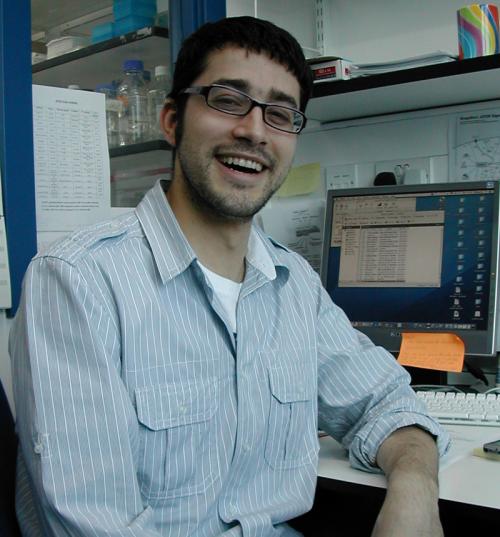
Juan M. GarcÃÂ_a-MartÃÂ_nez publishes important article describing a novel, highly specific mTOR inhibitor
A major mission of the MRC Protein Phosphorylation Unit is to exploit the advances we and others have made in understanding signal transduction networks to help pharmaceutical companies develop the next generation signal transduction inhibitors to treat human disease.
The mTOR protein kinase is a master regulator of cell growth and proliferation. It controls the activity of many AGC protein kinases that we have been investigating over the last 15 years in our Unit such as Akt, S6K and SGK. Many mutations that cause cancer in humans lead to inappropriate over-activation of the mTOR protein kinase and hence AGC kinases. This has lead to the notion that inhibitors of the mTOR protein kinase could suppress the proliferation of a large number of common human cancers.
Using technologies that have been developed in the MRC Protein Phosphorylation Unit over many years, Juanma (Juan M. GarcÃÂ_a-MartÃÂ_nez), has helped Astrazeneca characterise a novel and highly specific mTOR protein kinase inhibitor termed Ku-0063794. This compound inhibits mTOR complexes with an IC50 of 10 nM and is one of the most specific protein kinase inhibitors that we have ever characterised, as it does not inhibit the activity of over 80 other protein kinases tested even at very high concentrations. Juanma has established that Ku-0063794 is cell permeant, and suppresses mTOR signalling pathways in cells leading to the inhibition of Akt, S6K, and SGK1 protein kinases and downstream networks controlled by these enzymes.
This work establishes that Ku-0063794 will be a useful reagent to probe the physiological roles of the mTOR protein kinase. It will also help in defining whether inhibiting the mTOR protein kinase is indeed an effective anti-cancer therapeutic strategy.
The paper describing this work has been published in the Biochemical Journal.
The mTOR protein kinase is a master regulator of cell growth and proliferation. It controls the activity of many AGC protein kinases that we have been investigating over the last 15 years in our Unit such as Akt, S6K and SGK. Many mutations that cause cancer in humans lead to inappropriate over-activation of the mTOR protein kinase and hence AGC kinases. This has lead to the notion that inhibitors of the mTOR protein kinase could suppress the proliferation of a large number of common human cancers.
Using technologies that have been developed in the MRC Protein Phosphorylation Unit over many years, Juanma (Juan M. GarcÃÂ_a-MartÃÂ_nez), has helped Astrazeneca characterise a novel and highly specific mTOR protein kinase inhibitor termed Ku-0063794. This compound inhibits mTOR complexes with an IC50 of 10 nM and is one of the most specific protein kinase inhibitors that we have ever characterised, as it does not inhibit the activity of over 80 other protein kinases tested even at very high concentrations. Juanma has established that Ku-0063794 is cell permeant, and suppresses mTOR signalling pathways in cells leading to the inhibition of Akt, S6K, and SGK1 protein kinases and downstream networks controlled by these enzymes.
This work establishes that Ku-0063794 will be a useful reagent to probe the physiological roles of the mTOR protein kinase. It will also help in defining whether inhibiting the mTOR protein kinase is indeed an effective anti-cancer therapeutic strategy.
The paper describing this work has been published in the Biochemical Journal.

